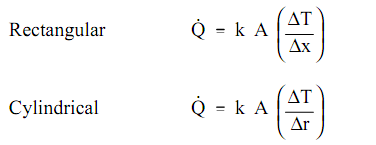Conduction
The Conduction includes the transfer of heat by the interaction among adjacent molecules of a material. The heat transfer by conduction is reliant upon the driving "force" of temperature difference and the resistance to heat transfer. The resistance to heat transfer is reliant upon the nature and dimension of the heat transfer means. All the heat transfer troubles include the temperature difference, geometry, and the physical properties of the object being study.
In conduction heat transfer troubles, the object being studied is generally a solid. Convection problems include a fluid medium. The radiation heat transfer troubles include either solid or fluid surfaces, divided by a gas, vapor, and vacuum. There are numerous ways to associate the geometry, physical properties, &temperature difference of an object with the rate of heat transfer via the object. In conduction heat transfer, the most general means of correlation is via Fourier's Law of Conduction. The rule, in its equation form, is most frequently used in its rectangular or cylindrical form (i.e., pipes and cylinders), both of which are represented below.

Here:
Q = rate of heat transfer (Btu/hr)
A = cross-sectional area of heat transfer (ft2)
Δx = thickness of slab (ft)
Δr = thickness of cylindrical wall (ft)
ΔT = temperature difference (°F)
k = thermal conductivity of slab (Btu/ft-hr-°F)